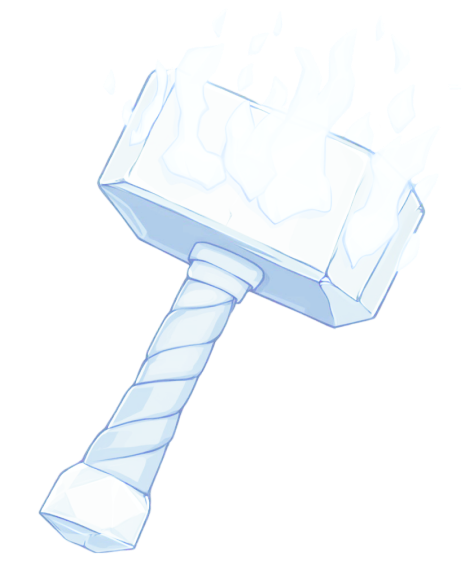Loops
Iterate over arrays and collections to dynamically generate content in your templates.
Introduction
Hammer's loop feature allows you to iterate over arrays and collections, generating content for each item. This enables you to create dynamic lists, grids, and repeated content without writing repetitive code.
Loops help you:
- Generate content from arrays and collections
- Create dynamic lists and grids
- Avoid repetitive HTML code
- Build flexible, data-driven templates
Basic Loops
Use @loop to iterate over an array or collection:
<!-- @var items = ["Apple", "Banana", "Cherry"] -->
<!-- @loop item in items -->
<div><!-- @item --></div>
<!-- @endloop -->The content between @loop and @endloop will be rendered once for each item in the collection.
in (e.g., item) is used to reference the current item in the loop. You can use any variable name you prefer.
Accessing Item Properties
When looping over objects, you can access properties using dot notation:
<!-- @var products = [{name: "Widget", price: 10}, {name: "Gadget", price: 20}] -->
<!-- @loop product in products -->
<div class="product">
<h3><!-- @product.name --></h3>
<p>$<!-- @product.price --></p>
</div>
<!-- @endloop -->This allows you to create rich, dynamic content from structured data.
Combining with Conditionals
Loops can be combined with conditionals to create more complex logic. For example, you can check if a collection is empty before looping:
<!-- @var items = [{name: "Item 1"}, {name: "Item 2"}] -->
<!-- @unless items.empty? -->
<!-- @loop item in items -->
<div class="item"><!-- @item.name --></div>
<!-- @endloop -->
<!-- @endunless -->This ensures the loop only runs when there are items to display.
Conditional Inside Loop
You can also use conditionals inside loops to customize output for each item:
<!-- @loop product in products -->
<!-- @if product.featured -->
<div class="product featured">
<span>Featured!</span>
<h3><!-- @product.name --></h3>
</div>
<!-- @else -->
<div class="product">
<h3><!-- @product.name --></h3>
</div>
<!-- @endif -->
<!-- @endloop -->Examples
Simple List
<!-- @var tags = ["HTML", "CSS", "JavaScript"] -->
<ul>
<!-- @loop tag in tags -->
<li><!-- @tag --></li>
<!-- @endloop -->
</ul>Product Grid
<div class="products-grid">
<!-- @loop product in products -->
<div class="product-card">
<img src="<!-- @path @@product.image -->" alt="<!-- @product.name -->">
<h3><!-- @product.name --></h3>
<p><!-- @product.description --></p>
<span class="price">$<!-- @product.price --></span>
</div>
<!-- @endloop -->
</div>With Empty Check
<!-- @var posts = [] -->
<!-- @if posts.empty? -->
<p>No posts available.</p>
<!-- @else -->
<!-- @loop post in posts -->
<article>
<h2><!-- @post.title --></h2>
<p><!-- @post.excerpt --></p>
</article>
<!-- @endloop -->
<!-- @endif -->Best Practices
Loop Structure
- Always close loops with
@endloop - Use descriptive variable names for loop items (e.g.,
product,post) - Keep loop content focused and readable
- Avoid deeply nested loops when possible
Data Structure
- Define arrays and objects clearly at the top of your file
- Use consistent data structures across your project
- Ensure array data is properly formatted
- Document complex data structures
Combining with Conditionals
- Check for empty arrays before looping when appropriate
- Use conditionals inside loops to customize output
- Keep conditional logic within loops simple and readable
- Test loops with empty and populated data
Next Steps
Now that you understand loops, learn about:
- Conditionals to combine with loops for dynamic content
- Variables for managing arrays and collections
- Hammer Includes to create reusable loop templates
